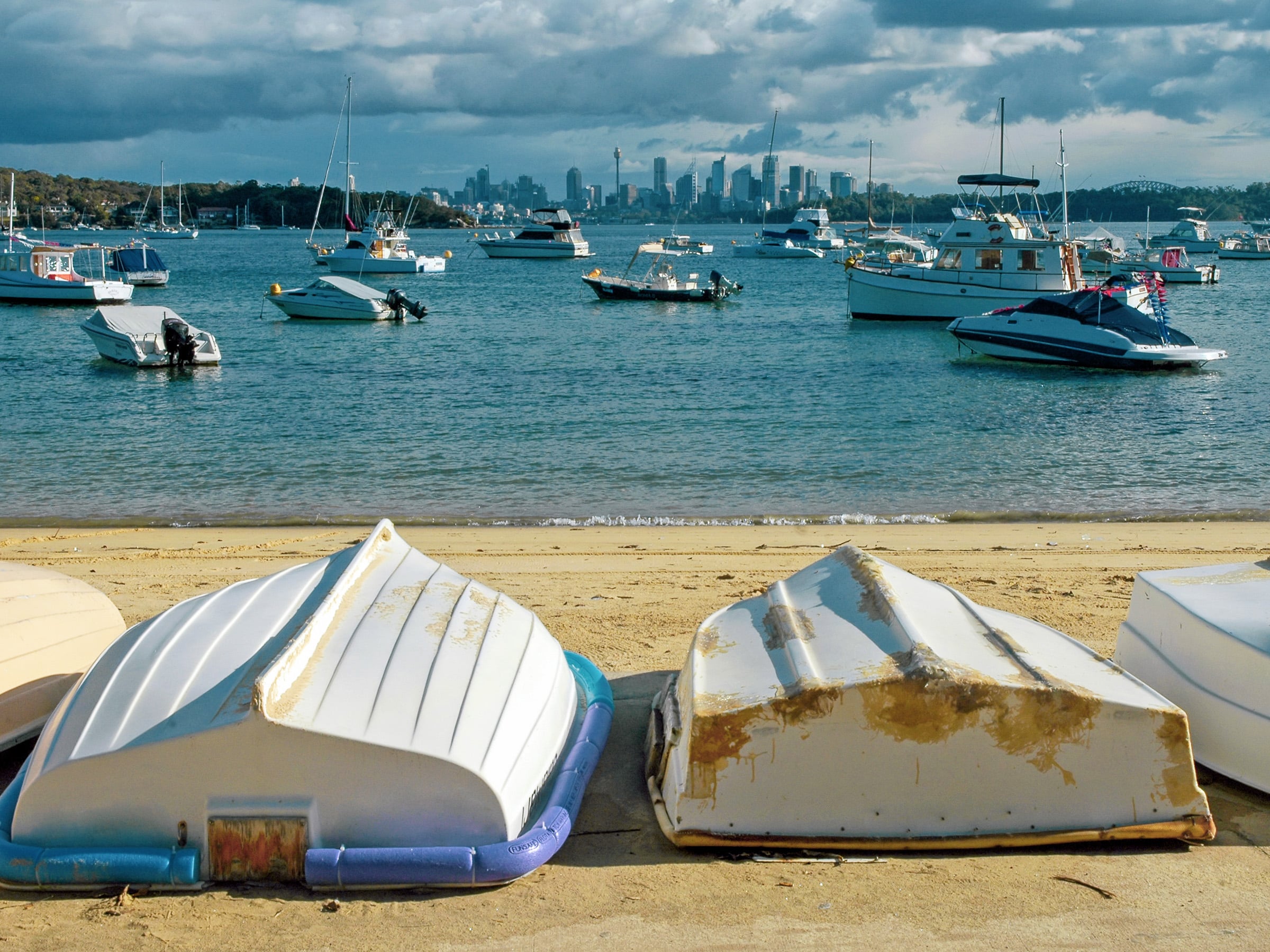Aboriginal Rock Carvings, Balgowlah
The Eora people were the traditional custodians of the land that now makes up central Sydney on both sides of the harbour. Evidence of their culture – one that thrived here for some 45,000 before the arrival of the First Fleet of convicts in 1788 – can be found in rock carvings and other art on headlands and grottos around the city.
Grotto Point at Dobroyd Head is one of the best places to see these rock engravings up close. Look carefully along the side of the trail to see a giant kangaroo, boomerangs, a whale and several small fish. The site features timber enclosures protecting the engravings and you can learn all about them from the informative signs.
The Landing of Governor Arthur Philip Memorial at Camp Cove, Watsons Bay
On 21 January 1788, while the rest of the First Fleet delivering convicts to New South Wales were waiting in Botany Bay, Captain Arthur Philip sailed north looking for a better landing spot. Through the heads he sailed – witnessed perhaps by Eora people at Grotto Point – becoming the first Europeans to visit what would come to be called Port Jackson, Sydney Harbour.
They spent the night on a beach on the south side of the harbour believed to be Camp Cove – and, probably, it was Camp Cove. In the parklands at the western end of the beach, you’ll find a 1927 marble monument declaring ‘On this beach (Camp Cove) Governor Phillip first landed in Port Jackson, January 21, 1788.’
Susannah Place Museum, The Rocks
Built in 1844, Susannah Place Museum is a terrace of four houses that incorporates a recreated 1915 corner store. Rare in the city of Sydney, it has a continuous history of domestic occupancy by working-class families.
Susannah Place Museum provides an opportunity to explore domestic working-class life from 1844 to 1990.
The many layers of the paint finishes, wallpapers and floor coverings that have survived provide valuable insight into the tastes of the working class. The original brick privies and open laundries are some of the earliest surviving washing and sanitary amenities remaining in the city.
Mothers and Wives World War Memorial, Woolloomooloo
With the distance of time, and the shrinking of the globe courtesy of air travel, it can be hard to perceive the magnitude of sacrifice and loss suffered by the World War I generation of Australians.
From a population of 4.9 million, 416,809 Australian voluntarily enlisted to serve. That was 38.7% of all men aged 18-44. Of these, 59,357 died in service during the war, from April 1914 to November 1918. That’s a rate of an average of 38 deaths per day over the 1,560 days of the war.
Those who died overseas were buried there. So, the cenotaphs and memorials found in towns and cities around Australia served as symbolic gravesites for the grieving families.
Chief among the mourners at home, of course, were the mothers and wives. This memorial – the Mothers and Wives World War Memorial – is dedicated to their sacrifice and situated near the Naval Base at Garden Island. It was from here that many of those who left Australia never to return departed, a place where their mothers and wives would have waved them off to war hoping for their safe return.
Black Sunday Memorial, Bondi Beach
The small Black Sunday Memorial to the events which took place at Bondi Beach on 6 February 1938 can easily be overlooked while walking between the beach and Icebergs.
While tragedy did unfold that day on the beach, it could have been much, much worse but for the dedicated service of that original Australian institution – the surf lifesaving club. The Bondi Surf Life Saving Club was the first-ever in the world when it founded in 1907. Their 31 years of experience was put to a test on that day which would be known as Black Sunday.
The day was hot, and the beach was even more crowded than usual because the first-ever Empire Games to be held in Australia had opened the day before at the Sydney Cricket Ground. Sydneysiders and both out of state and foreign visitors flocked to the famous stretch of sand that Sunday.
Late in the afternoon, three freak waves hit in rapid succession sweeping swimmers off their feet and pulling them into deeper waters. Over 20 chaotic minutes, up to 250 people were rescued including some 60 who were unconscious when they reached the beach. Five lives were lost but so many more were saved.
Sydney Adventure Tours offers private charter tours around Sydney – including the neighbourhoods mentioned in this blog post, the Blue Mountains, the South Coast, the Northern Beaches, and the Hunter Valley. We can also arrange bespoke tours to meet your needs




